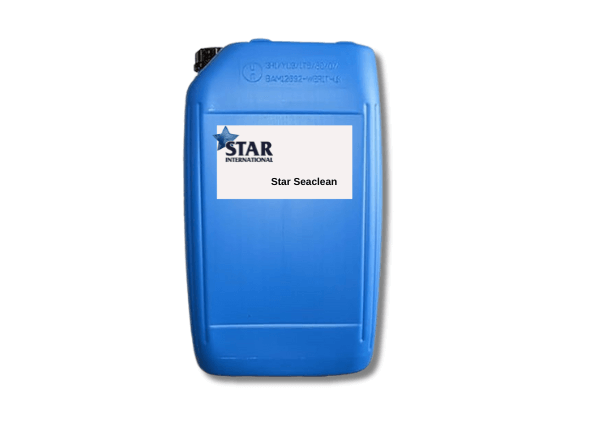Directions for use
Star Seaclean can be used as follows:
The direct injection method
The preferred method, as it saves time and manpower and makes the chemical dosage easy to control from deck.
An air operated metering pump is placed into the drum of chemicals and connected to the tank wash line on deck via a chemical feed hose.
It is important that the chemicals are fed on the pressure side of the washing machine being used. Dosage should be 1-2 litres of Star Seaclean per tonne of wash water.
The recirculation method
More economical as far as the consumption of chemicals is concerned; however, it is more time consuming and requires more heating, which again means more fuel. The chemical solution is prepared in a tank or a cofferdam and circulated through the tank wash system. Dosage should be 2-4%.
The gravity feed method
May be used on small vessels with no tank wash line on deck. The drums containing chemicals are placed on deck and the chemical feed hose is connected to the suction side of the tank wash pump.
The hand spray method
Undiluted Star Seaclean is sprayed on bulkheads, frames and stringers using an air operated pump and a spray gun. The resident time may be as long as one hour depending on the degree of contamination before it is washed off again with salt water.
The atomisation method
Very much like the hand spray method, but a lance with a spray gun is used instead and the whole operation takes place from deck.
Spot cleaning
After the cleaning with tank wash machines is finished, it may be necessary to manually clean places not reached by the tank wash machine. Star Seaclean is suitable for this purpose.
Ships Movement at Sea (rock and roll method)
May be used for cleaning double bottom and deep tanks at sea utilizing the ship’s natural movement. Time and temperature are the most important factors. Normally five days will suffice to clean and gas-free the tanks. However, in calm weather or where no heating is available, the solution should be left in the tanks for as long as possible.

